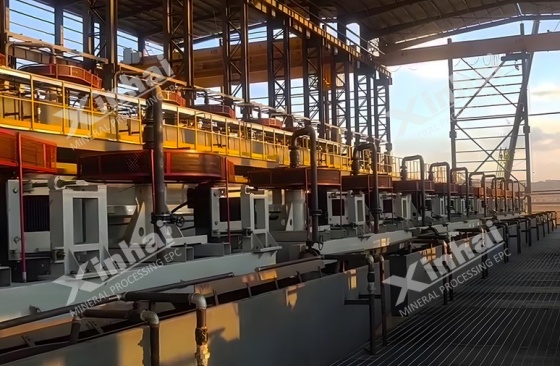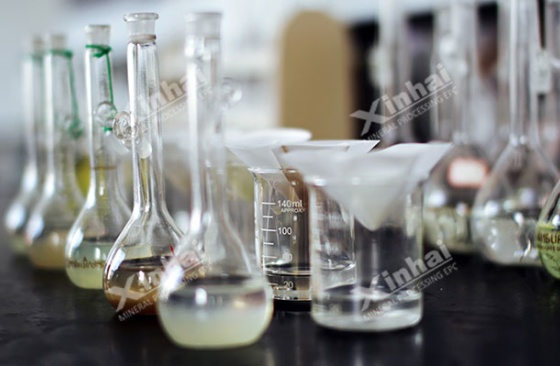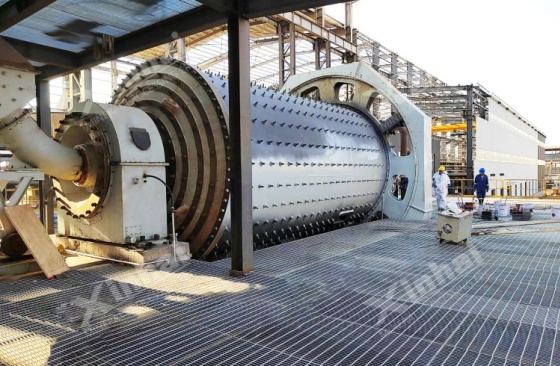If you want to know more information (such as product/process price, etc.), please contact us 24-hour telephone
The Li₂O content of low-grade lepidolite ore ranges from 0.3% to 0.6%. Although the ore has poor resource endowment, it possesses significant reserves, making its development necessary. Lithium is typically extracted from lepidolite using the flotation method. Due to its specific mineralogical characteristics, low-grade lepidolite ore requires special attention during processing.
Fine particle size: In low-grade lepidolite ore, lepidolite is often finely embedded within gangue minerals such as feldspar and quartz, typically <0.02 mm, making mineral liberation difficult and reducing separation efficiency.
High slime content: A large amount of secondary slime is generated during fine grinding, which hinders reagent adsorption and adversely affects flotation performance.
High impurity content: Low-grade lepidolite often contains high levels of impurities, including Fe₂O₃ (2–5%), Al₂O₃ (20–30%), and F (3–8%), which increases the difficulty of smelting and adds environmental pressure.

1. Ore Pretreatment
Desliming process: Desliming prior to flotation effectively removes fine slimes, reduces reagent consumption and entrainment, minimizes the interference of slimes with flotation, and improves the recovery rate of lepidolite. Desliming is commonly conducted using hydrocyclones.
Selective grinding: A staged grinding–staged separation strategy (coarse grinding with early tailings removal + fine grinding and flotation) helps address issues such as high energy consumption, excessive slime generation, and high processing costs.
2. Flotation Reagent System
Collectors: Cationic collectors (e.g., dodecylamine, etheramine) and anionic collectors (e.g., oleic acid) are used.
pH Regulators: Sulfuric acid and sodium carbonate are used to control pulp pH.
Activators: Sodium fluorosilicate enhances the surface reactivity of lepidolite.
Depressants: Water glass (sodium silicate) suppresses quartz and feldspar; lignosulfonate is used to depress iron-bearing minerals.

3. Flotation Process Design
Process flows such as "one roughing, two cleaning, two scavenging" or "one roughing, one scavenging, one cleaning" are employed to optimize recovery and concentrate grade.
Roughing–Scavenging–Cleaning: Roughing captures coarse lepidolite quickly, scavenging recovers fine particles, and cleaning upgrades concentrate quality.
Split flotation technology: Coarse and fine particles are floated separately with high pulp density for coarse particles and low pulp density for fine particles.
Combined process: A flotation–magnetic separation process is used to recover associated minerals such as tantalum–niobium-bearing ores, improving overall economic returns.
1. Hydrocyclone
Used for desliming muddy low-grade lepidolite ore prior to flotation, enhancing separation efficiency.
2. Ball Mill
Ball mills account for nearly half of an ore dressing plant's total energy consumption. To reduce energy usage and improve grinding efficiency, energy-saving ball mills are recommended: grid-type ball mills for coarse (first-stage) grinding, and overflow-type ball mills for fine (second-stage) grinding.

3. Flotation Equipment
The XCF/KYF flotation cell combination is recommended. This system integrates the advantages of mechanical agitation flotation machines while minimizing their disadvantages, offering advanced structure, reliable performance, and low energy consumption.
Low-grade lepidolite ore is characterized by fine particle size and challenging separation.In mineral processing design, it is essential to compare multiple beneficiation flowsheets and select the most suitable one. Equipment selection should not only meet the plant's capacity requirements but also prioritize energy efficiency and environmental sustainability. Ensuring a high recovery rate and producing qualified lithium concentrate are the ultimate goals of the beneficiation process.